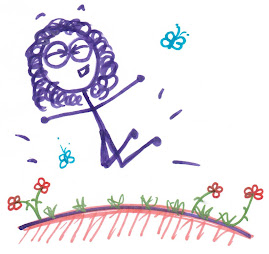2. National Education Association - According to this website, racial and ethnic minorities, english language learners, students with disabilities, and students from low-income families are at risk for experiencing achievement gaps.
- Engage school staff in discussions and activities that offer an opportunity to explore attitudes, beliefs, and values related to cultural diversity and cultural competence.
- Gather and organize resource materials related to culturally diverse groups for use by school staff.
- Determine the diverse groups served by your school. Consider cultural, linguistic, racial, and ethnic diversity. Find out the degree to which families and students in these groups are accessing available school services.
3. Stop Cyber Bullying - I took the score and thankfully received the lowest level of cyber-bullying. To be honest, I learned a great deal while simply taking the quiz. Before I started I didn't think I had any idea what cyber bullying really was and during the quiz I realized that it includes much more than blatant rude behavior towards others, it includes simply emailing or sending material that is, in reality, optional to the receiver to view but still rude in one way or another (crude humor, bashing another person, etc.). I also didn't know there were programs that record instant messages. That would be something useful for children outside of the classroom setting as well.
4. Kathy Schrock's Guide for Educators - The area under Teacher Helpers that I chose was the slide shows. Powerpoints can take a long time to create and some of the material, like her slide show titled ABC's of Web Site Evaluation contains universal material that should be taught (and re-taught) to every classroom starting at an early grade. I would definitely use quite a few of her slide shows in class since they can also be a very effective way of communicating material. The area under Subject Access that I chose was the science and technology then the general science tab, and I loved just about ever link I saw! Having access to sites where students can ask their own science questions, the Bill Nye site, a site about gem science, etc. There's a site for just about every area of general science and then there's extra links to interesting and quirky sites that might be fun and different to teach up on a projection screen or have students explore themselves in the classroom as a break from "textbook" science.
5. Multiple Intelligences - My top three learning styles are: Naturalistic, Intrapersonal, and Logical-Mathematics. I definitely agree with these although at first I questioned the naturalistic style being at the top of the list until I read more into it and found out how scientifically involved it is. I learned that schools with multiple intelligence influence in their teaching styles will help teach kids skills that they might never learn at a public school without those influences, for example, the video focused on the musical intelligence and showed kids having fun while developing their musical skills. They also commented on NCLB and how "when you're testing, you can't be teaching" and I really agree with this statement.
6. Teaching Tolerance - I chose upper grades, math and science, and all topics. I chose a math exercise that deals with functions and having the students try to find a property that is unique to multiple functions (nearly impossible) and how this can be related to stereotyping or "objectifying." I think this would be a great ice-breaker activity for the beginning of any school semester or school year and would really set the tone for cultural diversity and acceptance in the classroom.
7. Multicultural Education and Equity Awareness - The first question that I found very interesting was that the United States and the U.K. are at the bottom of the list for the treatment of their children. I hear in the news or in common conversation how "looked down upon" other countries social behaviors are and it's shocking that the U.S. would be viewed as worst treatment for children when so many laws and efforts are made to protect and advance the well-being of our children. The second question that I found rather appaling was the statistic of 52% of physicians witnessing colleagues giving gays, lesbians, or bisexuals reduced care or refusing care at all. I can't believe that someone with that much education would still make such a poor choice and it's really embarrassing.
8. Netiquette Guidelines - My score for the quiz was 100%. =^D Netiquette should be taught in classrooms because it can help a student be safer online, teach them newer things that they may not have heard of yet, prevent embarrassment, and help them create better impressions of themselves with others that they interact with online.


No comments:
Post a Comment